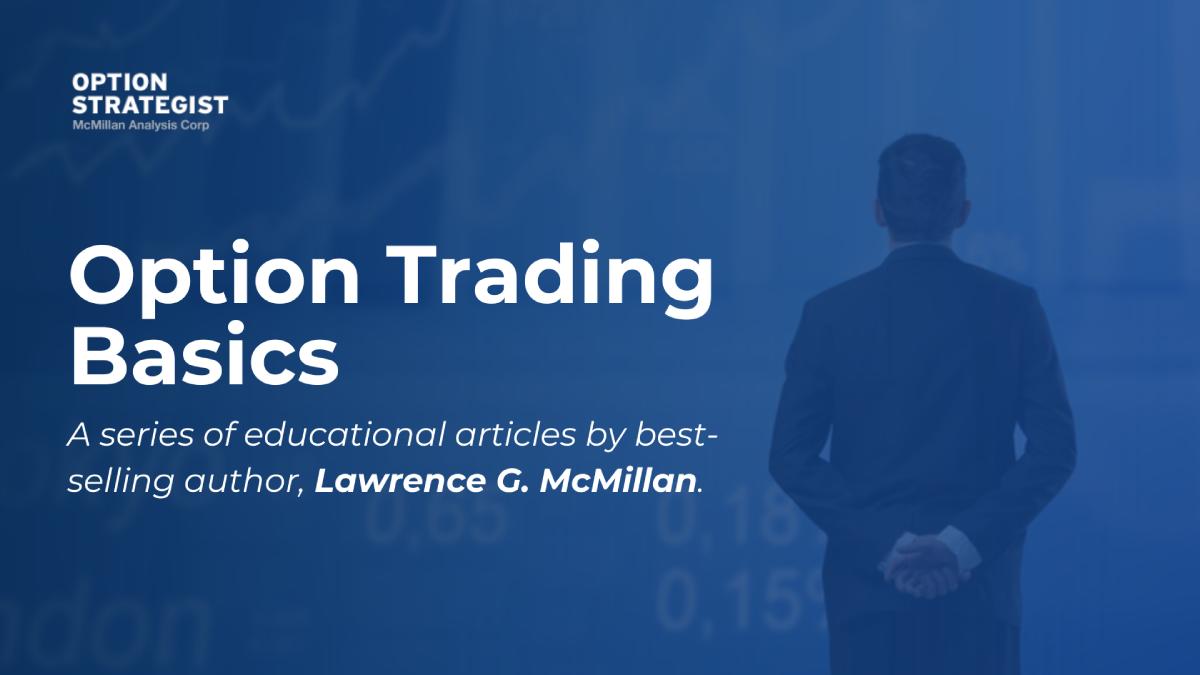
By Lawrence G. McMillan
This article was originally published in The Option Strategist Newsletter Volume 4, No. 22 on November 30, 1995.
Using options to protect your portfolio is, for most people, more of a theoretical exercise than a practical application. By that, I mean that most people think about using puts to protect their stocks — and they might even look at a few prices in the newspaper and figure out how much it would cost to hedge themselves — but when it comes right down to it, most people consider the put cost too expensive and therefore don't bother buying the protection.
Of course, in a year like we've had, who needs protection? After all, many stocks rose all year long, and any money spent buying puts was merely flushed down the drain. That laissez faire attitude could get you in trouble, however. Do you have that same perspective on your home owner's insurance? It's something akin to feeling that fire insurance is unnecessary because the house hasn't burned down before (or recently). The comparison, admittedly, is not a direct one because a natural disaster can occur on a moment's notice, while a decline in stock prices is usually less sudden — unless another crash were to occur — so you would have some chance to buy insurance for your stocks as prices started to fall. However, if you are sitting on large stock profits, you should take a serious look at buying protection using options.
The simplest way to protect yourself is merely to buy some put options. The cheapest way to protect yourself with puts is to buy puts on each individual stock that you own. Index puts are overpriced and therefore raise the cost of your insurance. It can be a rather tedious task to buy puts against each stock in your portfolio, but those equity puts are sure to be selling for a lower corresponding implied volatility than OEX puts, for example. However, if your portfolio is large, you may have no choice other than to buy index puts, for the sheer task of entering numerous orders and dealing with numerous bidasked spreads is too daunting.
If you use index puts to protect your portfolio, you must adjust for the difference in volatility between your portfolio and the volatility of the index in question. Even then, you are going to be subject to tracking error, which is a term used to describe the difference in performance between your portfolio and the performance of the index itself.
In either case, though, most investors look at the cost of the insurance and feel that it is too expensive, especially considering that it is at a static price. That is, if you own IBM at 95 and buy the Jan 85 puts as insurance, you have only 10 points of downside risk. However, if IBM rallied to 110 in the next few weeks, your risk is now 25 points down to the level where your insurance kicks in — at 85. So you are forced to either live with more risk or buy more insurance at a higher striking price. This often deters the investor from purchasing insurance also.
One approach that I like that limits the cost of insurance, although it may remove some of your upside profit potential is the collar. In this protection strategy, one buys an out-of-themoney put as insurance and also sells an out-of-the-money call to help finance the cost of the insurance. Thus, you have placed a sort of collar on your stock — you have limited downside risk, but have limited upside profit potential as well, although you don't necessarily have to eliminate it.
Example: Disney (DIS) has been on a strong run this year, but suffered a setback after earnings were announced on Tuesday. The stock is selling at about 61, and perhaps a holder of 1000 shares would like to lock in some of the 50%-plus gains generated by the stock this year. Assume that he is willing to risk 10% (down to 55), but wants insurance if DIS falls farther than that. The following prices exist:
DIS: 61 Apr 55 put: 1-1/8 Apr 65 call: 2¼
Since the call is selling for twice the price of the put, he can sell 5 Apr 65 calls and buy 10 Apr 55 puts without actually laying out any money. Then, not only is his entire 1000-share position protected at exactly 55, but he will make profits up to 65 on all of his shares. Even if prices rise beyond 65, he still has 500 shares while are not covered by the calls that were sold, and those 500 shares can provide upside profit potential.
This form of the collar is often a more palatable type of insurance to many investors, since there is no actual cost (in the form of a debit) for the insurance. The cost comes in the form of lessened upside profit potential. With this form of the collar, however, one does not even have to give up all of his upside profit potential — only a portion of it. This type of collar even works for a wild internet stock like UUNET (UUNT). Try looking at the option prices on the most extended stock in your portfolio, and you may find a collar that fits like a glove.
This article was originally published in The Option Strategist Newsletter Volume 4, No. 22 on November 30, 1995.
© 2023 The Option Strategist | McMillan Analysis Corporation

